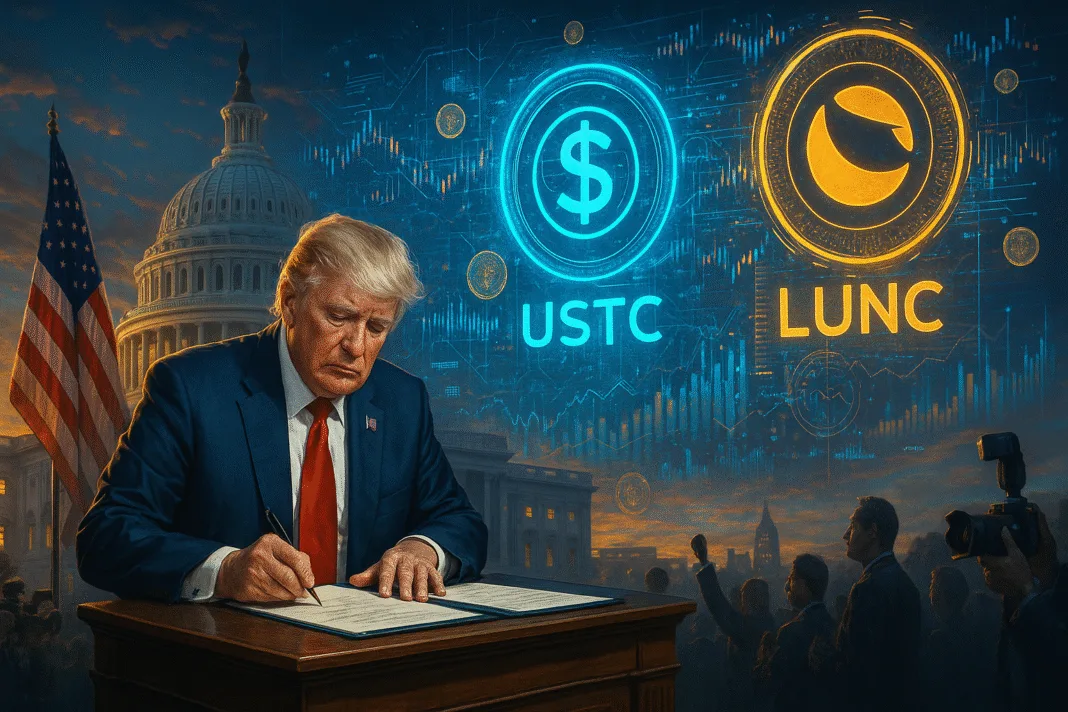On July 18, 2025, President Donald Trump signed the GENIUS Act, a landmark law establishing a regulatory framework for dollar-pegged stablecoins, marking a pivotal moment for the cryptocurrency industry. This legislation, passed with bipartisan support in the House (308-122) and Senate, aims to legitimize stablecoins as a mainstream payment method by requiring issuers to back tokens with liquid assets like U.S. dollars or Treasury bills and disclose reserves monthly. This move could transform digital assets like TerraClassicUSD (USTC) and Luna Classic (LUNC), enhancing their potential for everyday use.
USTC, a stablecoin designed to maintain a 1:1 peg with the U.S. dollar, stands to benefit significantly. The GENIUS Act’s clear regulations could restore confidence in USTC, which faced challenges after its 2022 de-pegging crisis. By mandating transparent reserve management, the law may encourage exchanges to relist USTC, improving liquidity and accessibility for payments. This regulatory clarity could also attract retailers and consumers, enabling USTC to serve as a stable medium for transactions, potentially rivaling traditional payment systems.
LUNC, the governance token of the Terra Classic ecosystem, could see indirect benefits. As USTC gains traction under the new framework, increased demand for Terra’s ecosystem may drive LUNC’s utility and value, especially if new protocols leverage USTC for synthetic asset creation. However, challenges remain—posts on X suggest that USTC’s repegging efforts could face hurdles due to compliance with the new law, potentially risking delisting if not addressed.
The GENIUS Act positions the U.S. as a crypto leader, with Standard Chartered estimating the stablecoin market could reach $2 trillion by 2028. For USTC and LUNC, this legislation offers a path to mainstream adoption, provided they navigate regulatory demands effectively.

